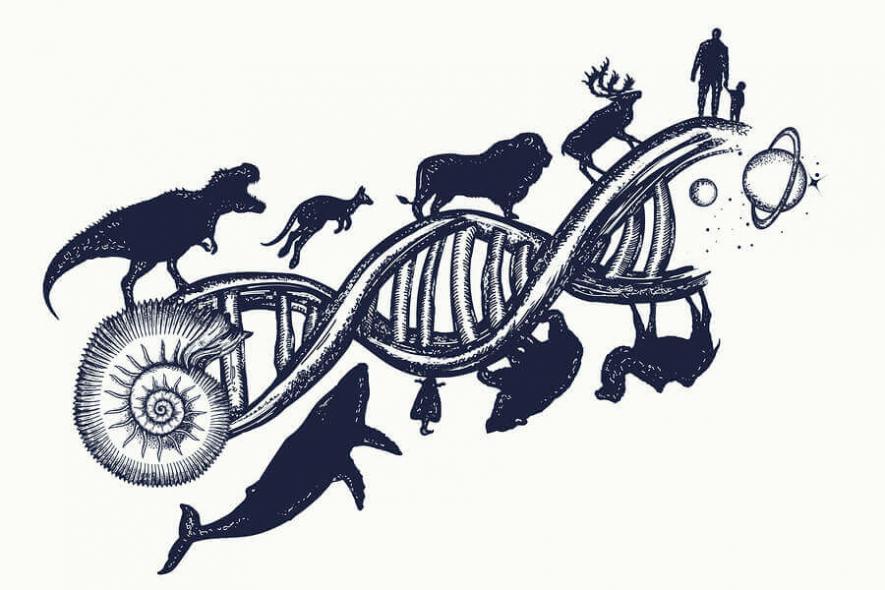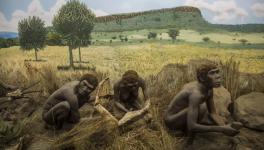Complex Evolution of Spine Conferred Different Physical Capabilities on the Mammals

Be it running, standing straight, or breathing deep, our spine facilitates everything. The mammalian spine is a complex structure consisting five different parts with each capable of specialised functioning. But, how the complex and versatile mammalian spine came into being has been a good old question beckoning scientists. A recent study, conducted by Harvard University scientists Stephanie Pierce and Katrina Jones, has found a link of evolution and the development of complex mammalian spines. In the evolutionary scale, there was stepwise emergence of different spinal regions from the distant relatives of mammals to the modern mammals. This confers the advantage of diverse physical activities to the modern mammals.
The analysis made in the study uncovered an interesting fact about the spine—that there has been a stepwise addition of regions to the spines, as evolution progressed. The distant ancestors of the mammals had lesser regions in their spines, while mammals have the maximum number of regions. Dimetrodon, a synapsid resembling reptiles with a large sail on its back, had three regions in their spines. They are named as cervical, anterior dorsal and posterior dorsal regions. Again, the therapsids, the species that just preceded mammals, had the fourth region in their spines designated as the pectoral region. The fifth region, the lumber, appeared in the early egg-laying mammals, and is found today in modern placental mammals including humans. Synapsids are the species that lived on the earth some 200/300 million years ago. They include distant and most immediate predecessors of mammals.
Their work also hinted towards the factors that acted as driving factors for the emergence of different regions in the spines. The pectoral region, for example, that appeared in the spine of the therapsids, according to the analysis, can be attributed to the evolution of longer forelimbs positioned under the body. One example here, which can be thought in this perspective, is that of the dog’s legs in comparison to the legs of the lizards. The changes in the limb required a change in the shoulder girdle. In fact, the shoulder girdle got enlarged, and this resulted in the emergence of the pectoral region just behind the neck. These changes also gave some evolutionary edge to the mammals, these changes helped some shoulder muscle to evolve to a diaphragm which improved breathing in mammals and thus conferred the mammals with a higher metabolic rate—analysed Emily Bechholtz, the vertebrate paleontologist of Wellesley College, Massachusetts.
On the evolutionary scale, further changes in the limb structure gave rise to the modern spine seen in the today’s mammals in which individual regions can function without harming the overall functioning of the spine. Different regions are responsible for different functions, and thus adopting to different environments. The fifth region, lumbar, the evolutionary most recent region that appeared in the mammalian spines gives mammals the advantage of doing different tasks—said Stephanie Pierce.
The researchers, in their attempt to trace the complex evolutionary history of the mammalian spine development, explored museums for fossils having complete backbones. From what they could retrieve, analysis of spines of 16 synapsids along with species that are distant and immediate predecessors of mammals was done. They used CT scan method to get high resolution images for finer details of the spinal structures.
Scientists have been on a long quest to find different regions in the mammalian spines based on their vertebrae. The vertebrae are the series of bones while each one has a hole through which the spinal cord passes through. The spinal cord and the vertebrae together make the backbone or the vertebral column. Different regions in the spine are made up of different vertebrae having different functional attributes. In the mammals, the small cervical vertebrae make up the neck; thoracic vertebrae support the ribs and chest, the lumbar vertebrae make up the rear. In contrast, the reptile and amphibian vertebrae are homogenous—all the vertebrae perform similar functions.
Get the latest reports & analysis with people's perspective on Protests, movements & deep analytical videos, discussions of the current affairs in your Telegram app. Subscribe to NewsClick's Telegram channel & get Real-Time updates on stories, as they get published on our website.




















